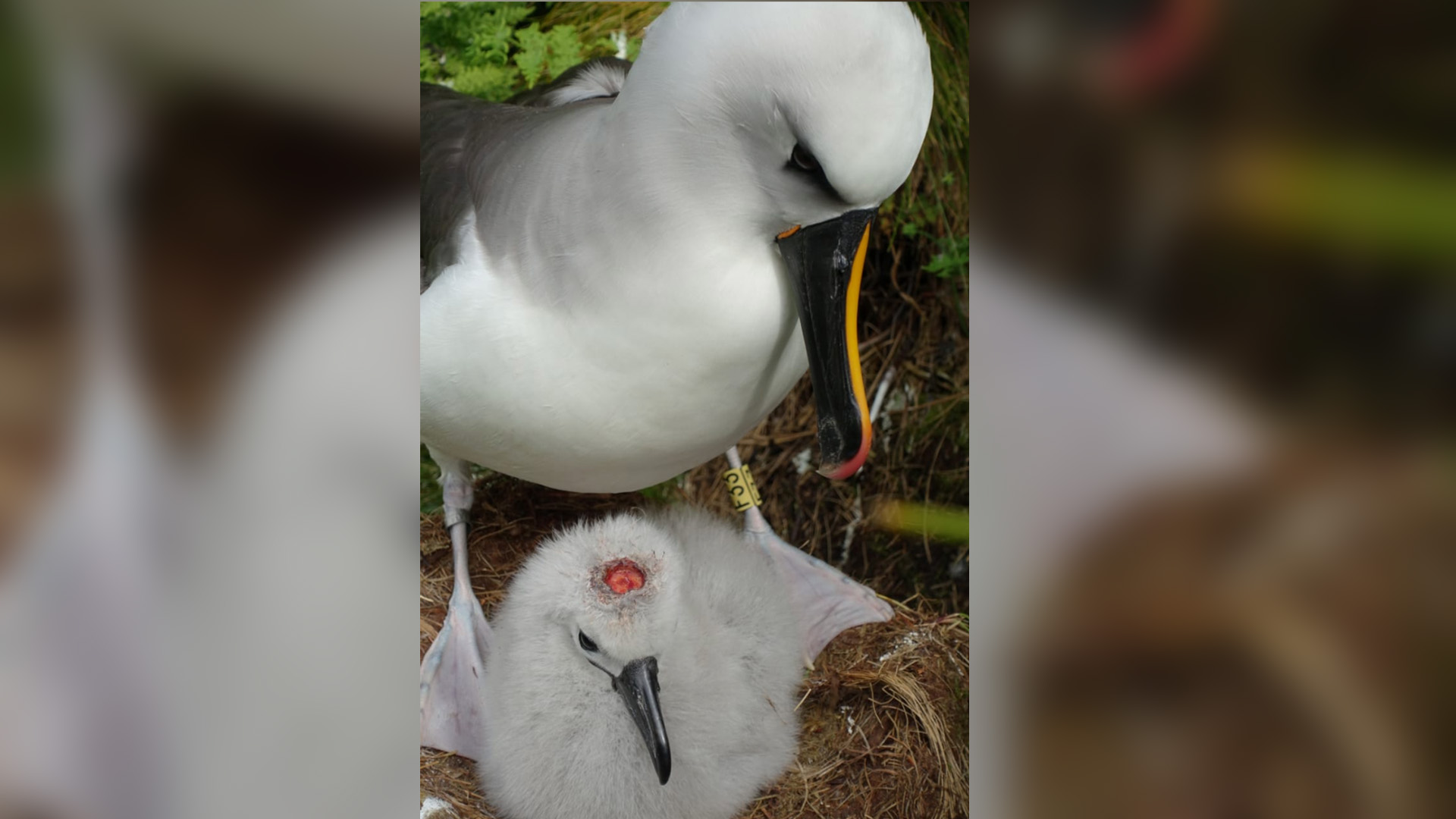Mice Caught Attacking Adult Albatross in Gruesome Video
Invasive mice are attacking not just chicks, but also adult birds on a remote Atlantic island.
Gruesome new video shows mice attacking an adult albatross on the World Heritage Site of Gough Island in the South Atlantic.
It's an alarming new behavior from the invasive mice, which have long been known to attack albatross chicks and eat them alive. The Royal Society for the Protection of Birds (RSPB), a charity in the United Kingdom, released the disturbing video on Dec. 5.
Related: See Photos of Mice Attacking Albatross Adults & Chicks
"We have known for more than a decade that the mice on Gough Island attack and kill seabird chicks," RSPB field assistant Chris Jones said in a statement accompanying the video release. "While this is already of great concern, attacks on adults, which can produce dozens of chicks in their lifetime, could be devastating for the populations' chances of survival. … [T]hese gentle giants could now be lost even more rapidly than we first predicted."

Gough Island is a speck of land in the South Atlantic. House mice (Mus musculus) were introduced by sailing ships in the 1700s. The rodents quickly gained a foothold on the island, attacking and devouring the chicks of a variety of seabirds, including the critically endangered Tristan albatross (Diomedea dabbenena). A 2018 study funded by RSPB found that the mice are responsible for wiping out 2 million seabird eggs and chicks each year. With a ready source of largely defenseless prey at hand, the mice have evolved to be 50% larger than the average house mouse, according to RSPB.
In the new video, a mouse scurries into the nest of a Tristan albatross, brazenly crawling onto the adult bird's back and beneath its feathers. The bird turns uncomfortably and tries, apparently unsuccessfully, the reach the mouse with its beak. Albatrosses lay only one egg every other year, so every loss of an egg, chick or adult matters for population numbers.

The Tristan albatross range includes the southern Atlantic and Indian oceans, from Australia to South Africa to Argentina. There are an estimated 3,400 to 4,800 adults left in the wild, according to the International Union for Conservation of Nature (IUCN). The birds are threatened at sea by longline fishing, which can snare and entangle hunting albatross. On islands where the birds nest, rats and mice are a major threat. Gough island is now the breeding ground for 99% of the world's population of Tristan albatross.
Sign up for the Live Science daily newsletter now
Get the world’s most fascinating discoveries delivered straight to your inbox.
Mice on Gough also threaten the Atlantic petrel (Pterodroma incerta), an endangered black-and-white seabird whose population is also concentrated ont Gough Island. There are an estimated 1,800,000 Atlantic petrels still in the wild, according to the IUCN, but their population has been declining by between a third to a half over the last three generations.
To stanch the losses, the RSBP is working with the government of Tristan da Chunha, a territory of Great Britain, to eradicate mice on Gough Island. The goal is to spread rodent-specific poisons across the island by 2020. The project is seeking donations at www.goughisland.com.
- 9 Times Nature Was Totally Metal
- Beastly Feasts: Amazing Photos of Animals and Their Prey
- 15 of the Largest Animals of Their Kind on Earth
Originally published on Live Science.


Stephanie Pappas is a contributing writer for Live Science, covering topics ranging from geoscience to archaeology to the human brain and behavior. She was previously a senior writer for Live Science but is now a freelancer based in Denver, Colorado, and regularly contributes to Scientific American and The Monitor, the monthly magazine of the American Psychological Association. Stephanie received a bachelor's degree in psychology from the University of South Carolina and a graduate certificate in science communication from the University of California, Santa Cruz.










